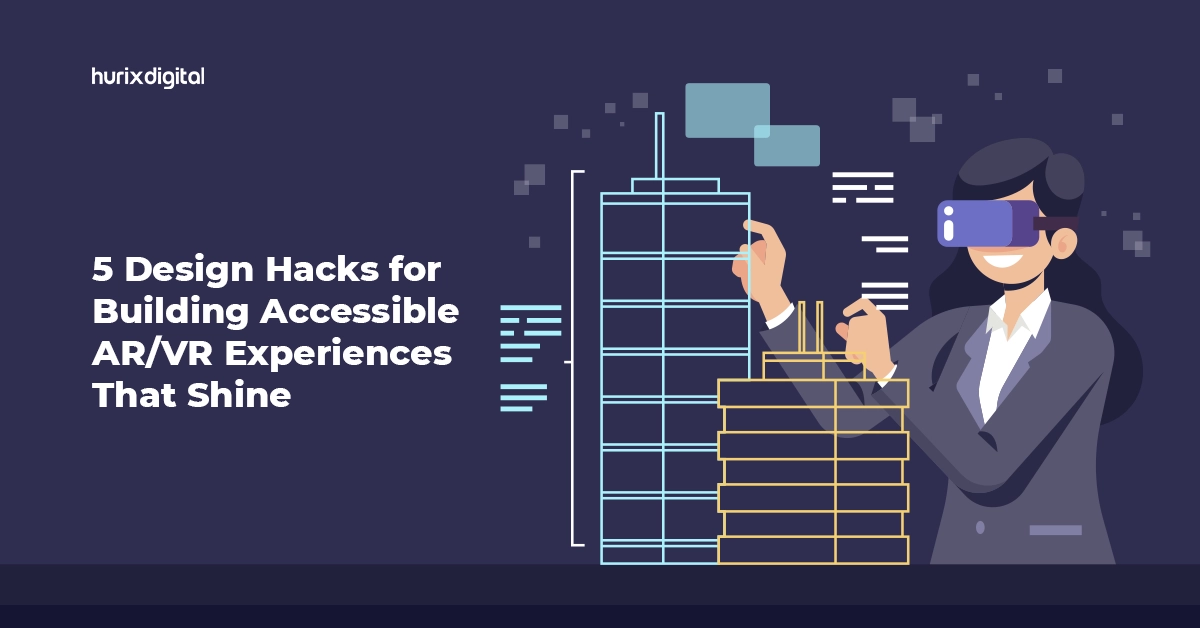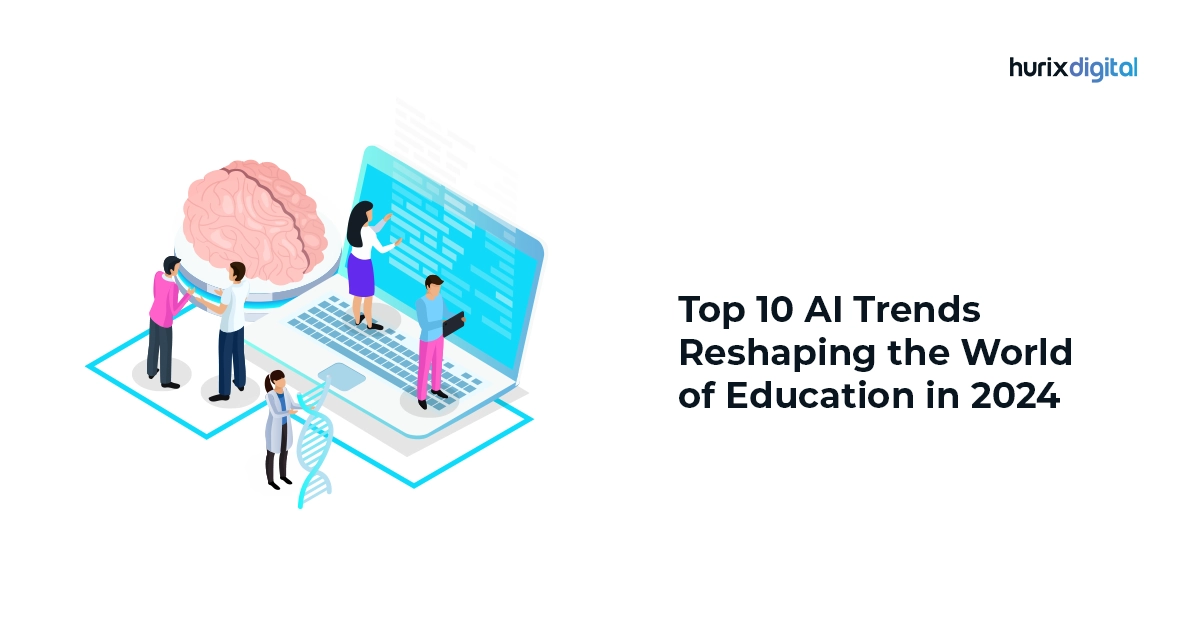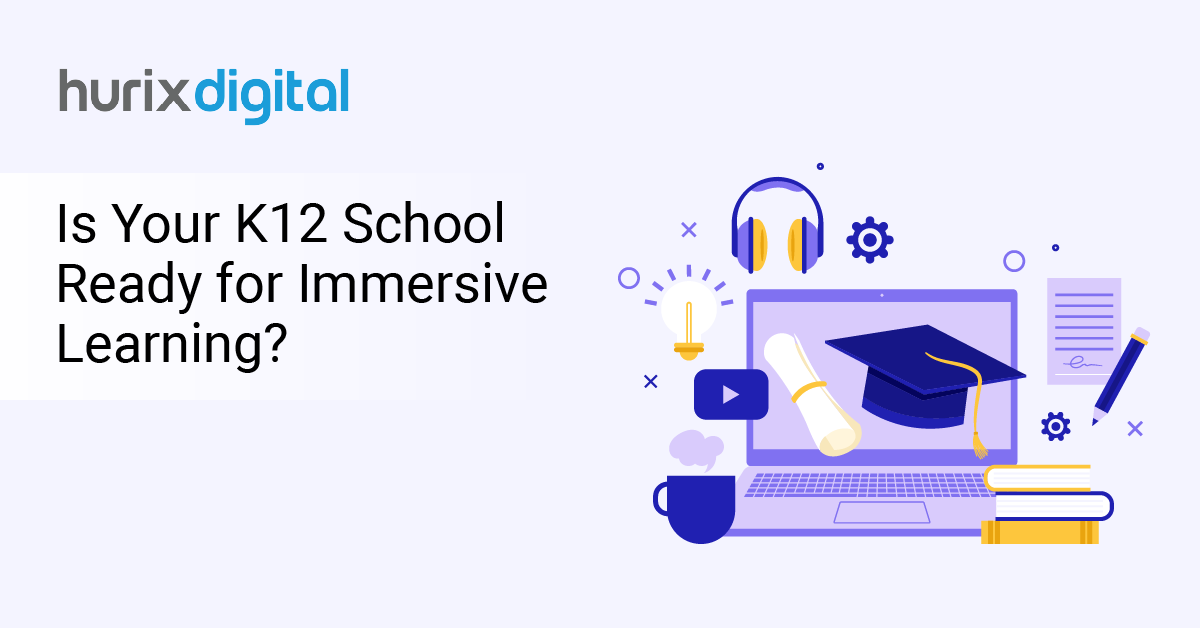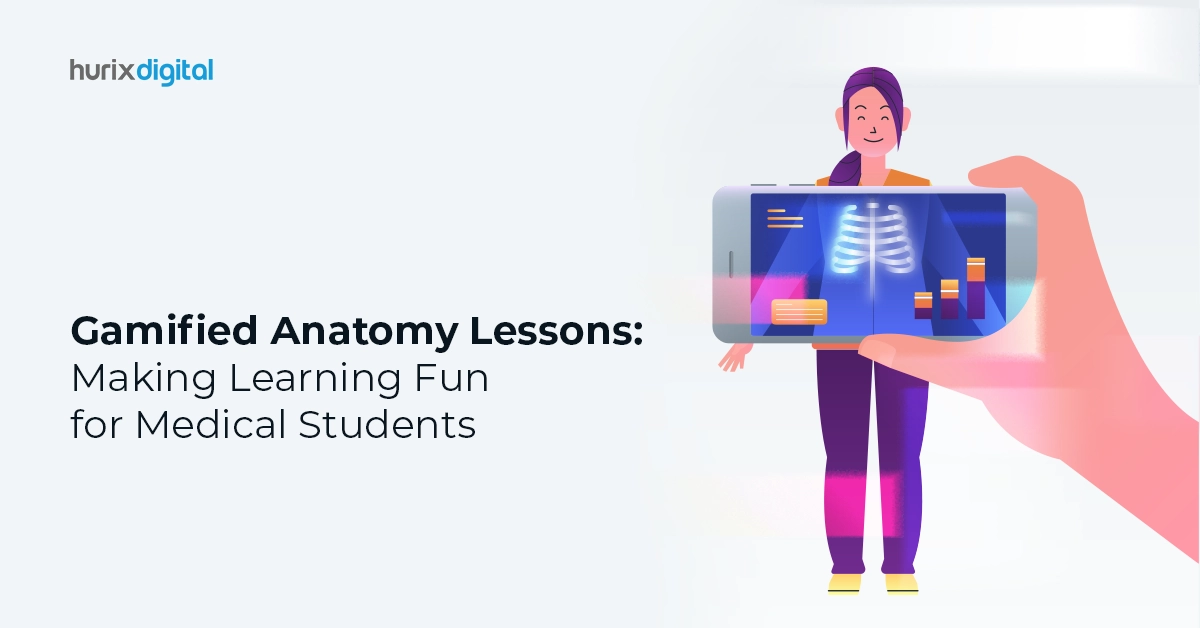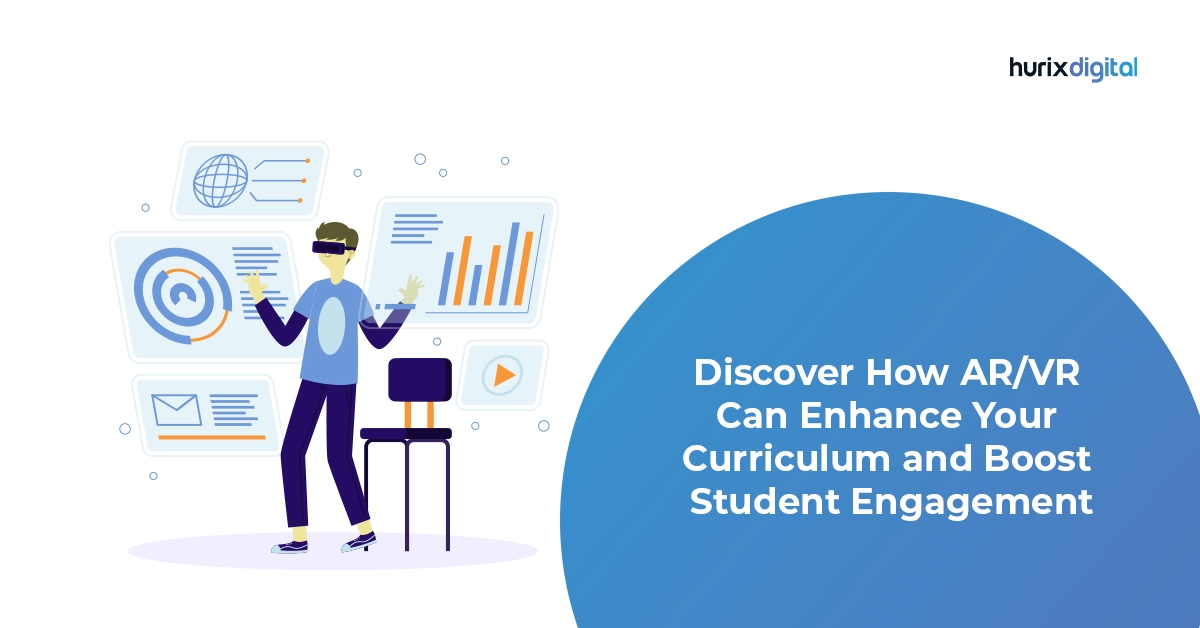
Discover How AR/VR Can Enhance Your Curriculum and Boost Student Engagement
Summary
This article shows how AR and VR can enhance your curriculum and boost student engagement. It explains how these immersive technologies create interactive learning experiences, increase student participation, and provide hands-on practice in a virtual environment.
AR VR in the curriculum has gained immense popularity in recent years, bringing about innovative transformations in how students learn and perceive.
Virtual reality and augmented reality help students in higher education by boosting motivation and interest, improving comprehension and retention, encouraging teamwork and communication, and building skills and competencies.
Owing to huge demand, the market for VR in education is expected to reach $28.70 billion by 2030, growing at a compound annual growth rate of 30.7% from $4.40 billion in 2023.
Additionally, AR VR in K12 education provides an interactive experience to boost student engagement in varied ways. This article outlines the benefits of incorporating AR VR in the curriculum, future trends, and more.
Table of Contents:
- What is Augmented Reality (AR) in Education?
- What is Virtual Reality (VR) in Education?
- Top 5 Benefits of AR/VR in Education
- What is the Future of AR/VR in Education?
- Takeaway
What is Augmented Reality (AR) in Education?
Augmented Reality (AR) is a multifaceted suite of technologies that help students see a crucial aspect of the world using gadgets like tablets and mobile phones that gather data from their surroundings. By increasing student engagement and expertise, augmented reality (AR) in education enhances the learning environment.
In AR, cameras and sensors identify an image and calculate the separation between the two things. Users gain an understanding of the reality they see as an outcome.
Then, projection and reflection are used to incorporate virtual data into the users’ perspective. As a result, augmented reality (AR) combines virtual components that enhance users’ perspectives with their own.
The integration of personalized, game-based learning outside of the classroom is made possible by augmented reality learning technology for educators.
What is Virtual Reality (VR) in Education?
Virtual reality (VR) is a computer-generated simulation that modifies reality impressions. VR is a virtual world with realistic-looking objects and scenarios. With certain tech accessories, such as goggles or helmets, a person can perceive virtual realities as genuine.
Virtual reality (VR) has been used in education to help learners from different cultural backgrounds bond and understand complicated subjects because it provides immersive learning experiences in multifaceted realities.
Also Read: The Transformative Impact of AR-VR in Healthcare
Top 5 Benefits of AR/VR in Education
There is a tremendous demand for AR VR in the educational setting to create a more inclusive classroom and ensure curriculum enhancement.
Here are the top 5 benefits of AR/VR in boosting student engagement.
1. Boosts Interactive Learning Experiences for Better Understanding
When compared to two-dimensional methods, instructors can communicate knowledge and subject matter more effectively with AR and VR.
In higher education, virtual reality can fully submerge students in a virtual environment where they can communicate in real time with virtual individuals or objects.
This is especially useful in situations where learning necessitates engagement with the real world. For instance, digital overlays of guidelines for difficult tasks like fixing a machine or carrying out an intricate procedure could lead students through the process.
2. Provides Scope for Personalized Learning
In higher education, virtual and augmented reality technology enables teachers to accommodate each student’s specific needs and learning choices.
Through the analysis of student interactions and progress, AR and VR systems can modify the pace, level of difficulty, and content to maximize learning outcomes. With the support of this adaptive approach, students can learn according to their learning styles and at their own pace.
3. Forges Collaborative Spirit for Enhanced Student Engagement
Students are more motivated in a collaborative learning environment because it promotes active learning. AR and VR technologies enable dynamic learning and cooperative research.
Students can collaborate in virtual settings regardless of where they are physically located, fostering a global learning environment. Virtual spaces can be used for cooperative exercises, group projects, and team-based role-playing games that foster creative thinking, interpersonal skills, and teamwork abilities.
4. Encourages Knowledge retention by Gamification of Education
Gamification is a technique used in education to make routine tasks more interesting by incorporating game mechanics and components. It is elevated to a new level by the merging of MR, VR, and AR technologies.
With augmented reality (AR), students can create interactive, situational educational experiences by superimposing digital elements on the actual environment.
It has been demonstrated that AR, VR, and MR technologies improve understanding of difficult concepts and help students retain knowledge. These immersive technologies boost the recall of knowledge and comprehension by stimulating multiple senses.
With the ability to interact with objects in three dimensions, visualize abstract ideas, and watch processes in real-time, students can gain a deeper understanding of the subject matter.
5. Improves Skill Development
VR and AR make practical, hands-on learning possible. Through authentic situations, they can assist students in practicing and mastering skills by simulating real-world conditions.
Allowing students to practice the skills in a safe setting boosts their self-assurance and better equips them to complete the tasks in real-world situations.
To obtain practical experience without the constraints and dangers of the real world, they can participate in virtual demonstrations, medical procedures, or creative guides.
What is the Future of AR/VR in Education?
According to numerous studies, the VR education market is expected to reach $700 million by 2025.
AR and VR bolster students’ enthusiasm for the subject and hands-on learning. VR lowers cognitive load and makes it easier for students to remember even complex and abstract subjects.
Some of the predicted future trends of AR VR technologies that have the potential to transform the E-learning landscape are as follows:
- Increased Availability At Attractive Prices: With the release of new head-up displays and apps that allow for larger immersion at a reduced price, AR VR will become more accessible for schools and educational enterprises.
- Overcome Language Barriers: A functionality that could be readily added to VR software is language translation. This will remove all language obstacles and potential challenges associated with learning a foreign language by enabling users to experience AR VR classroom realizations in any language.
- A Step Towards Inclusivity: With the use of AR VR aid, which provides a variety of applications, such as the capacity to adjust text sizes, contrasts, and audio remarks, students with visual impairments can customize their VR experience to meet their individual needs and remain engaged in the classroom.
Also Read: 7 Benefits of Using AR and VR Technology in Employee Training
Takeaway
Because of the immersive learning environments that AR and VR provide, these technologies have a lot to offer in the quickly evolving field of educational technology. They also make it possible to share knowledge in interesting and engaging ways and expand access to education.
If you are looking for EdTech solutions to facilitate AR VR in the curriculum of your educational organization, get in touch with Hurix Digital. Our company offers educational institutions and businesses the best technological solutions and online instructional platforms.
Using the newest technologies, we strive to provide a comprehensive user experience while making sure all of our digital goods and services meet the highest standards.
Get in touch to know more!

Senior Vice President
A Business Development professional with >20 years of experience with strong capability to sell new solutions and develop new markets from scratch. New Market Entry Specialist with experience of working in two of the largest emerging markets – China & India. Also covered other key markets in APAC, US, EU & ME. Exceptional experience of conceptualizing, ideating and selling new learning technologies like VR AR, etc. across multiple industry verticals.
